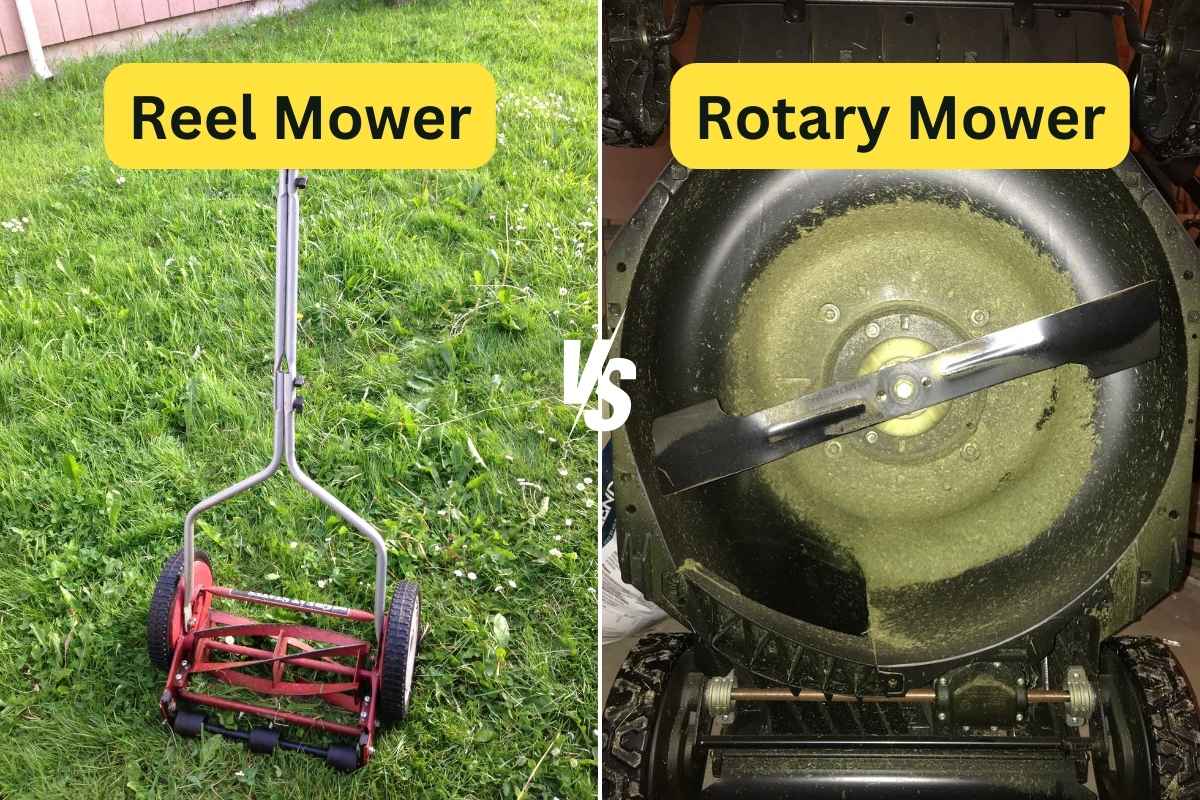
When deciding between a reel mower vs. a rotary mower, base your decision on your lawn’s needs. For instance, reel mowers are best for cutting short grass, while rotary types can mulch longer grass and leaves with ease.
However, factors such as lawn size, cutting quality, and ease of use can also affect your choice. We’ll explain each factor in detail to help you choose between a reel mower and a rotary mower.
What is a Reel Mower?
| Key Features of a Reel Mower |
| ✓ Quiet operation ✓ Manual pushing and steering ✓ Eco-friendly with zero emissions ✓ No need for gas or electric power ✓ Helical blades arranged in a cylindrical reel that spins vertically |
If you don’t want to refuel a gas lawn mower, recharge a battery-powered mower, or trip over the cord of an electric lawn mower, you might want to use a reel mower instead.
Sometimes called a cylinder mower, a reel mower is mostly known for its manual version, the push reel mower. Don’t expect power steering when you use this mower, as you’ll have to rely on your own strength to push and steer it.
Did You Know? You can also opt for powered (electric or gas) reel mowers, but they’re more expensive, heavier, and generate noise. Also note that gas mowers produce direct emissions, while electric mowers produce indirect emissions.
With 5 or more spiral blades that rotate around a drum or reel, this type of mower allows you to mow as low as 1/2 inch up to 2 inches without compromising the quality of the cut. It’s like you’re using large lawn scissors to cut grass, minus the bending and kneeling. Since you won’t use gas to power this mower, you don’t have to worry about accidentally inhaling fumes.
Note: If the thought of physical labor puts you off, you can hire a lawn care professional to mow the lawn on your behalf.
See Related:
What is a Rotary Mower?
| Key Features of a Rotary Mower |
| ✓ Can handle tough vegetation ✓ Pull cord or push button start mechanism ✓ Powered by gas, battery, or electricity (corded) ✓ Most models have larger rear wheels to handle uneven terrain ✓ Horizontal blade spins at high speeds (approximately 3,000 RPM) ✓ Options for side discharge, rear bagging, or mulching of grass clippings |
Most homeowners use a rotary lawn mower, which can be gas-powered, corded electric, or battery-powered. Regardless of the power source, this type of mower has one or more blades that spin horizontally at a very high speed to cut grass. When you use a rotary mower, it’s like you’re whacking the grass with a sword, but a whole lot faster.
Effective at cutting tall grass, rotary mowers have the option to adjust the cutting height between 1 1/2 and 4 inches, depending on the model. And if your lawn has uneven terrain, this mower’s four wheels can help you maneuver it across your lawn with ease.
If you’d rather sit and drive a mower than walk behind and push it, riding mowers are best, especially if your lawn is larger than 1/2 acre. They’re heavier but more powerful, allowing you to mow a large lawn much faster.
See Related: Gas vs. Electric Lawn Mowers
Reel Mower vs. Rotary Mower Comparison
In the battle of reel mower vs. rotary mower, choosing a winner can be difficult. So, we made things simpler for you by comparing them based on the most significant factors.
Here’s a table that gives a quick overview of their differences:
| Factor | Reel Mower | Rotary Mower |
| Lawn Size and Terrain | Works well with small lawns and flat terrain | Well-suited for large lawns and uneven landscapes |
| Cutting Mechanism | Uses a reel with multiple blades that cut in a scissor-like motion | Uses one or two high-speed horizontal blades that tear through the grass |
| Cutting Quality | Produces precise, clean cuts, ideal for a manicured lawn | Handles taller and thicker grasses better, but may leave uneven cuts |
| Ease of Use | Requires manual effort and takes longer to mow a given area | Covers more ground quickly with less physical effort |
| Maintenance | Minimal upkeep, only requiring occasional blade sharpening | Requires regular maintenance like oil changes, air filter cleaning, and blade sharpening |
| Cost | Generally more affordable, costing around $129 for push models | More expensive upfront (costs between $100 and $2,000; riding mowers cost up to $6,000) and has higher upkeep costs |
| Environmental Impact | Eco-friendly with zero emissions | Gas models emit pollutants, while electric models offer a cleaner alternative |
| Noise | Quiet operation, making it ideal for noise-sensitive areas | Gas-powered models can be noisy; electric models are quieter but not as quiet as reel mowers |
| Weight/ Maneuverability | Lightweight and easy to maneuver on flat terrain, but not recommended for overgrown grass | Heavier but more effective at cutting through dense, overgrown areas on uneven terrain |
Lawn Size and Terrain
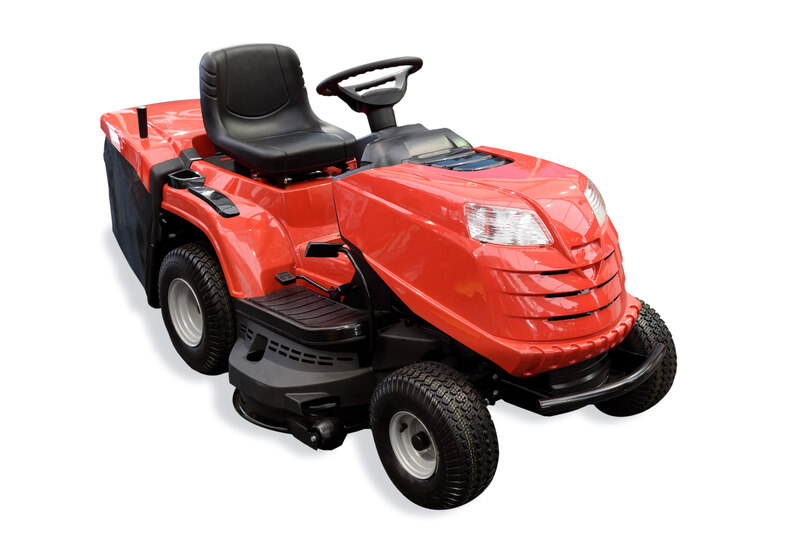
Winner: Rotary mower for large lawns and uneven terrain; reel mower for small, flat lawns
- Reel: The bigger the lawn, the more endurance you’ll need to push a reel mower. And if you have uneven terrain, using a reel mower may be more challenging than using a rotary mower — you could even end up scalping your turf.
- Rotary: With their four wheels, taller blade height options, and horizontally spinning blades, rotary mowers can easily handle uneven ground. Self-propelled rotary mowers have a drive system, while rotary push mowers rely on the operator’s force.
See Related: 10 Best Lawn Mowers for Small Yards [Reviews]
Cutting Mechanism
Winner: Rotary mower
- Reel: While the cylinder design allows for a scissor-like cut, this mower is not versatile enough to handle taller grasses. Reel mowers work best on grass mowed at or below 2 inches.
- Rotary: The horizontal spinning blade tears through the grass, so you won’t have to worry about thicker vegetation or longer grasses.
Cutting Quality
Winner: Reel mower
- Reel: Well-suited for flat, even terrains, reel mowers can make precise, clean cuts as low as 1/2 inch. Because the cut is uniform, it’s the lawn mower of choice if you’re aiming for a manicured or English-style lawn.
- Rotary: While rotary mowers don’t cut as precisely, they can handle taller and weedy grasses (or lawns with a mix of grass types) better, making them more versatile. But the blade should be sharp, and don’t cut wet grass (or during a drought) to avoid lawn diseases and dehydration.
Ease of Use
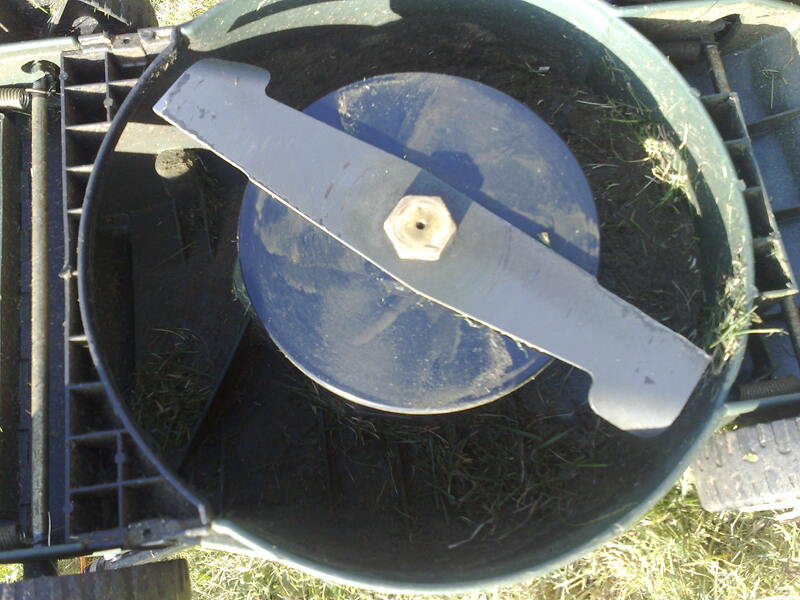
Winner: Rotary mower
- Reel: You’ll have to exert physical effort, especially when using a manual push mower. Plus, it takes longer to mow a given area.
- Rotary: While you’ll also need to exert effort to operate and start a gas-powered pull-cord mower (the most common type of rotary mower), you can cover more ground faster and with less effort. For even easier mowing, choose a self-propelled vs. a push rotary mower. The drive system does most of the work for you.
Note: You can cover 0.2 to 0.5 acres per hour when using a rotary mower. With a push reel mower, you can mow at an average speed of 0.1 to 0.3 acres per hour.
See Related: 9 Best Push Lawn Mowers [Reviews]
Maintenance
Winner: Reel mower
- Reel: There’s minimal lawn mower maintenance involved in maintaining a reel mower, as you only have to keep the blades and bed knife sharp and lubricate the gears.
- Rotary: Apart from requiring gas or electricity for power, rotary mowers also call for more maintenance. For example, a rotary mower with a gas engine requires regular oil changes, winterizing, carburetor and air filter cleaning, and spark plug replacement.
See Related:
Cost
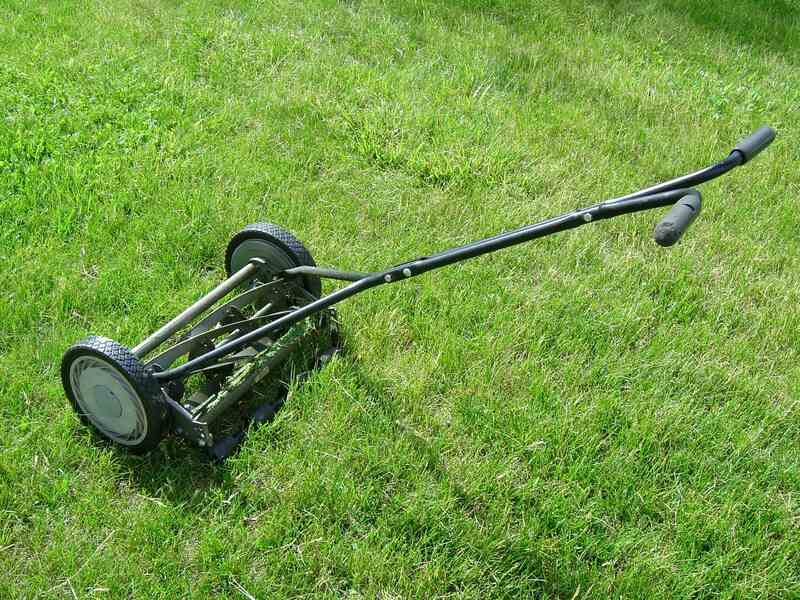
Winner: Reel mower
- Reel: A push reel mower doesn’t have many components compared to gas or electric rotary motors, so it costs less in general. Look to spend around $129 for reel mowers. Blade sharpening costs under $30 and is the primary ongoing maintenance expense.
- Rotary: Push mowers cost around $110 to $840, self-propelled mowers cost between $260 and $2,070, and riding mowers cost around $1,200 to $3,000 (or up to $6,000 for zero-turn). Plus, the gas and upkeep costs for a rotary mower are higher than a reel mower.
Environmental Impact
Winner: Reel mower
- Reel: Since a push reel mower doesn’t have an engine, it requires no fuel or electricity. Thus, you won’t have to worry about harmful emissions each time you mow.
- Rotary: On the contrary, gas rotary mowers release harmful pollutants like carbon monoxide or volatile organic compounds. Plus, there’s always the risk of fuel spills.
Noise
Winner: Reel mower
- Reel: Since a reel mower is human-powered, it’s significantly quieter. This makes lawn mowing more enjoyable for homeowners who love listening to birds chirping while cutting the grass.
- Rotary: Since rotary mowers use an engine (whether gas or electric), they can be much louder. If your neighbors are sensitive to noise, this may not be the mower for you. Electric mowers can be as loud as washing machines (up to 75 decibels), while gas mowers can reach 95 to 105 decibels.
Weight/Maneuverability
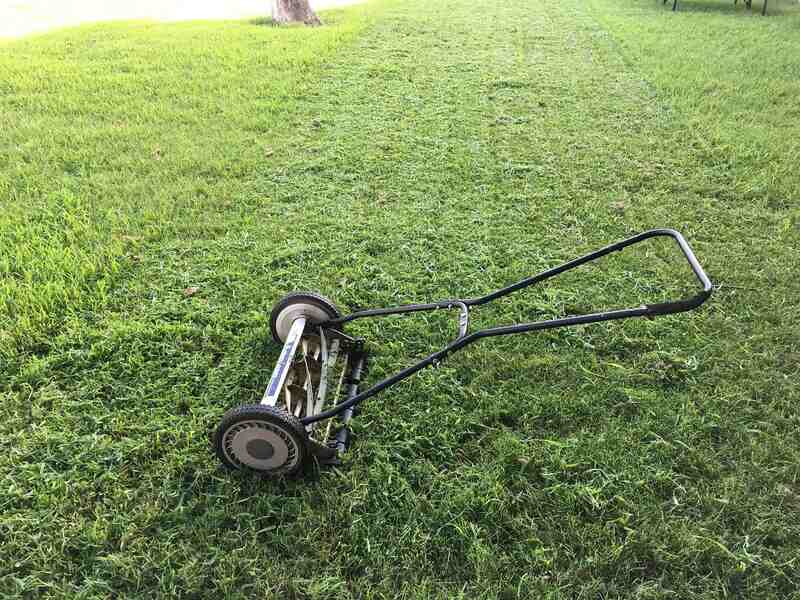
Winner: Reel mower for weight; rotary mower for maneuverability
- Reel: A reel mower usually weighs around 17 to 35 pounds. However, it takes quite an effort to push a reel mower when mowing tall grasses (the ideal cutting height is 1/2 to 2 inches), and it can be difficult to handle when the terrain is not flat or even.
- Rotary: Walk-behind rotary mowers weigh 50 to 150 pounds — much heavier than reel mowers. But their design allows easy maneuverability even through thick, dense grasses and bumpy terrains.
Who Should Choose a Reel Mower?
Homeowners have different preferences and lawn needs, so there’s no right or wrong choice when deciding between reel and rotary mowers. But you may choose to use a reel mower if you have a small lawn with a level terrain and want the following:
- An eco-friendly mower with zero emissions
- A clean and uniform cut for your turf
- To burn a lot of calories while mowing
- Minimal maintenance costs
- To cut your grass short
- Quiet operation
Note: Mowing the lawn for 30 minutes using a push reel mower can burn 165 calories (if you weigh 125 pounds) or 198 calories (if you weigh 155 pounds).
Pro Tip: Take your time and maintain a steady pace when using a reel mower. This way, you can get a cleaner and more uniform cut and avoid uneven cuts or missing sections of grass.
Who Should Choose a Rotary Mower?
Not everyone has the time and energy to use a push reel mower, especially homeowners with large lawns and uneven terrain. Apart from making it easy to navigate on bumpy ground, you may also want to choose a rotary mower if you:
- Need to cut through tall grass and weedy or thick vegetation
- Want to get the job done quickly and with minimal effort
- Don’t want to cut your grass too short
- Don’t mind the noise (gas-powered)
- Won’t be restricted by extension cords (corded electric)
Note: Mowing the lawn for 30 minutes using a gas-powered or electric rotary lawn mower can help you burn 135 calories (if you weigh 125 pounds) or 162 calories (if you weigh 155 pounds).
FAQ About Reel Mower vs. Rotary Mower
No, reel mowers can’t cut grass over 2 inches. Reel mowers struggle to cut through tall grasses because of the design of their cutting mechanism. If the grass is too tall, it tends to bend over and get pushed down.
Yes, compared to a reel mower, rotary mowers can be worse for your lawn’s health if they’re not properly maintained. Instead of cutting cleanly, its mechanism tends to rip or tear the grass blades, making them more vulnerable to diseases and stress.
To avoid these issues, sharpen your mower blades after 20-25 hours of use. Also, avoid cutting wet grass (or during a drought) to avoid overstressing the lawn.
A reel mower requires minimal maintenance, as you only need to keep the blades sharp and lubricate the gears. On the other hand, gas rotary mowers need regular maintenance for several components: You must clean the air filter, replace the spark plug(s), change the oil, and drain the fuel before winter.
Use the Right Type of Lawn Mower
A reel mower cannot just replace a rotary mower and vice versa. Your choice will depend on which particular lawn mower can help you get the job done. Some prefer a reel mower in the summer and switch to a rotary mower in autumn. Others use a reel on the front lawn and a rotary in the backyard.
If you still can’t decide which lawn mower to use, hiring a local lawn care pro would be better, as they have the right equipment and experience to mow your lawn.
Sources:
“Calories Burned in 30 minutes for People of Three Different Weights.” Harvard Health Publishing.
Main Image Credits:
Reel Mower: Rachael Ludwick / Flickr / CC BY-SA 2.0
Rotary Mower: Atomicdragon136 / Wikimedia Commons / CC BY 4.0
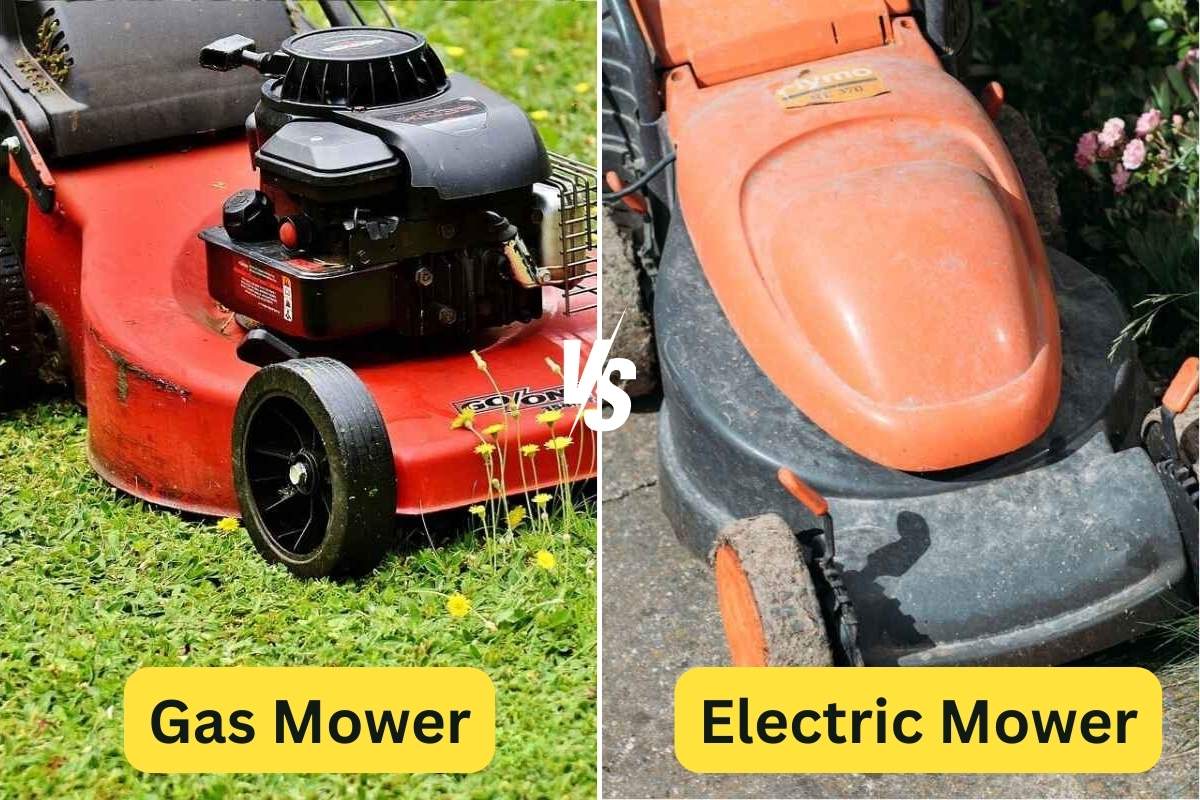
![7 Best Gas Lawn Mowers of 2025 [Reviews] person usiing lawn mower with text overlay on it](https://www.lawnstarter.com/blog/wp-content/uploads/2021/07/Best-Gas-Lawn-Mowers.jpg)
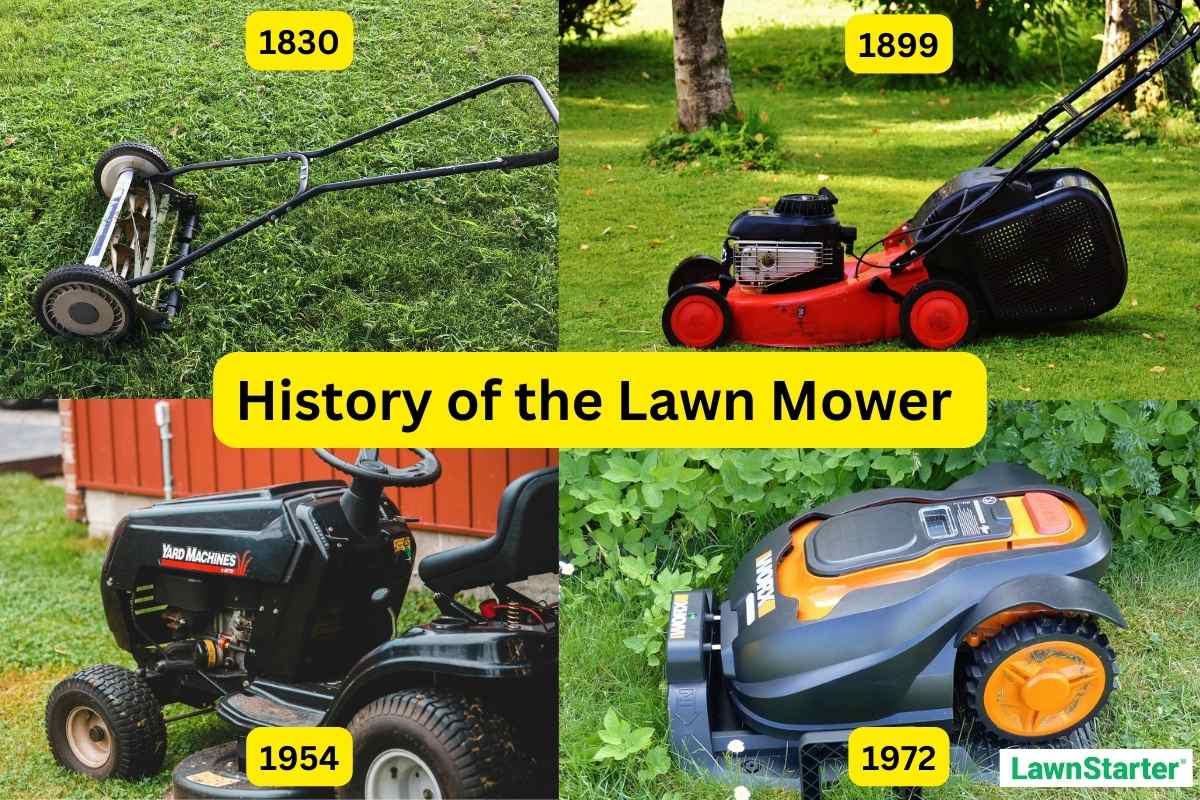
![10 Best Lawn Mowers for Small Yards in 2025 [Reviews] lawn mower cutting grass of small yards with text overlay on it](https://www.lawnstarter.com/blog/wp-content/uploads/2021/01/Best-Lawn-Mowers-for-Small-Yards.jpg)
![8 Best Lawn Mowers of 2025 [Reviews] lawn mower cutting grass with text overlay on it](https://www.lawnstarter.com/blog/wp-content/uploads/2021/02/Best-Lawn-Mowers.jpg)